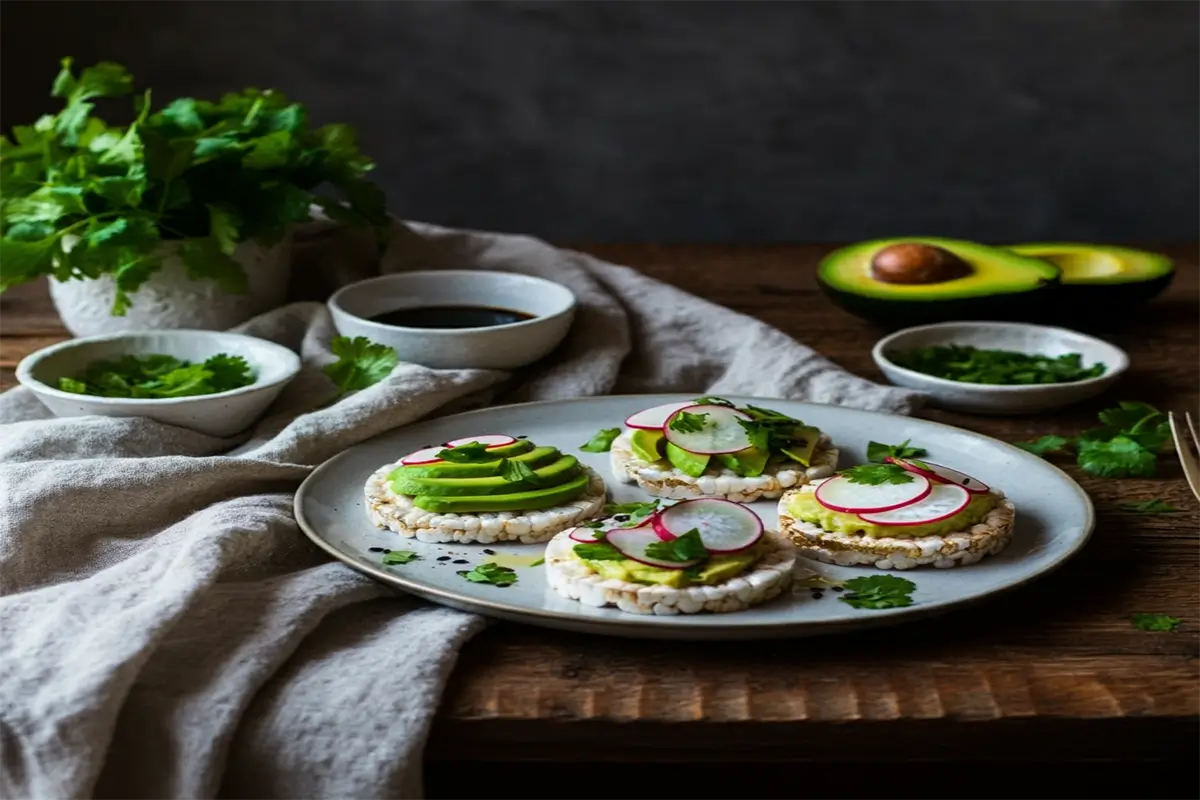When you think of rice cakes, you might envision a simple, lightweight snack. But these little disks of puffed rice offer far more than just a low-calorie treat. Rice cakes have been around for centuries and are enjoyed by cultures across the globe. Whether you’re looking for a quick snack or a healthy base for your meals, rice cakes are a versatile option that can easily fit into your lifestyle. In this guide, we’ll explore everything you need to know about rice cakes—from what they are to how to make them at home, plus creative ways to enjoy them.
Table of Contents
What Are Rice Cakes?
Rice cakes are a type of snack food made from puffed rice that is compressed into a disk or cake shape. These cakes have become popular worldwide, known for their light and crispy texture. While many people associate them with weight loss or healthy snacking, they actually have a rich history, originating in ancient cultures.
Rice cakes come in various forms, ranging from plain, crunchy cakes to flavored ones with sweet or savory toppings. They’re made by steaming or puffing rice, which is then pressed into shape. The result? A snack that’s low in calories, gluten-free, and easy to customize.
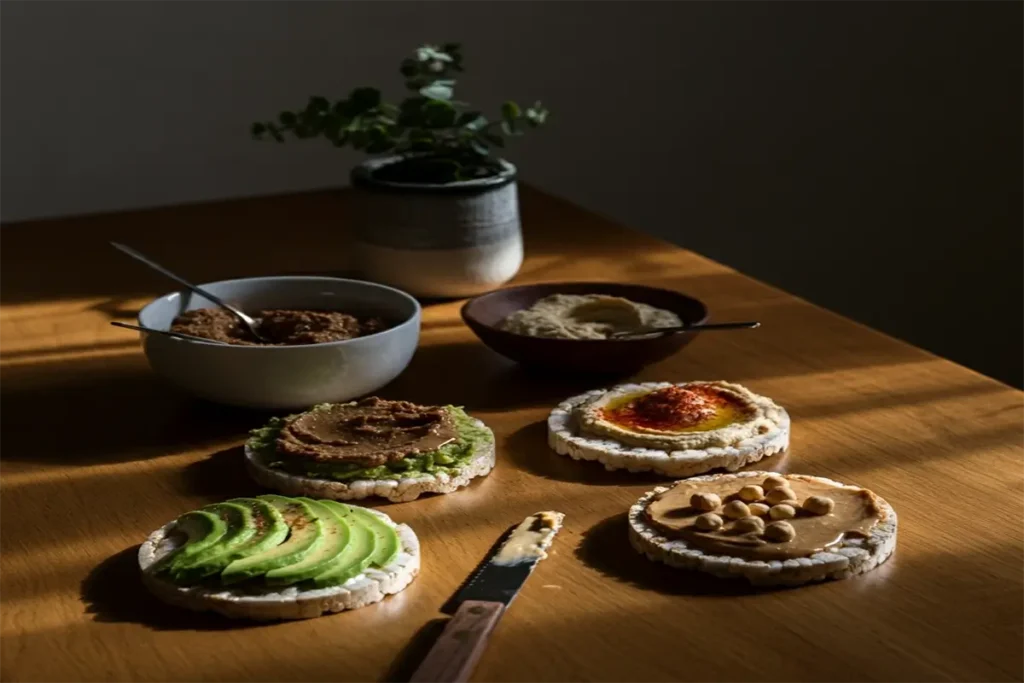
Why Rice Cakes Are Gaining Popularity
Rice cakes are gaining attention for several reasons. Their simplicity and ease of preparation make them an attractive snack choice for busy individuals. They are also naturally gluten-free, making them an excellent option for those with dietary restrictions. Whether you’re looking for a quick bite between meals or a healthy base for a meal, rice cakes provide a satisfying solution.
Another factor driving the popularity of rice cakes is their versatility. You can add almost anything to a rice cake to enhance its flavor. From spreading nut butter on top to layering with fresh veggies, rice cakes are a blank canvas for creativity.
Types of Rice Cakes
Rice cakes vary widely depending on the region, flavor, and ingredients used. Here’s a breakdown of the most common types of rice cakes you’ll encounter:
Traditional Rice Cakes
The most common variety, these are typically made from puffed rice and a touch of salt. They are light, airy, and have a mild taste, making them perfect for snacking on their own or as a base for toppings.
Rice Cake Variations Around the World
Rice cakes have different forms depending on the culture. In Korea, you’ll find tteok, a chewy rice cake made from steamed rice flour. In Japan, mochi rice cakes are made from glutinous rice and are often used in desserts. In Thailand, sticky rice cakes are made with a sticky, sweet rice and are enjoyed in various savory dishes.
Flavored Rice Cakes
While plain rice cakes are delicious on their own, many brands offer flavored options. These range from savory options, like sea salt or cheese, to sweet varieties like caramel or chocolate. Keep in mind that while flavored rice cakes can be tasty, they may also contain added sugars or sodium, so always check the labels.
Steaming Rice Cake: The Healthier Option
If you’ve ever made rice cakes at home, you might have boiled or steamed your rice before shaping it. Steaming rice cakes is generally considered the healthier option compared to boiling them. But why is steaming better?
Why Steaming Rice Cake Instead of Boiling is Better
When you steam rice cakes, you help retain more of their nutrients. The steaming process locks in moisture without the need for additional fats or oils, helping preserve the rice’s natural vitamins and minerals. Boiling, on the other hand, can cause some nutrients to leach out into the water, resulting in a loss of essential nutrients.
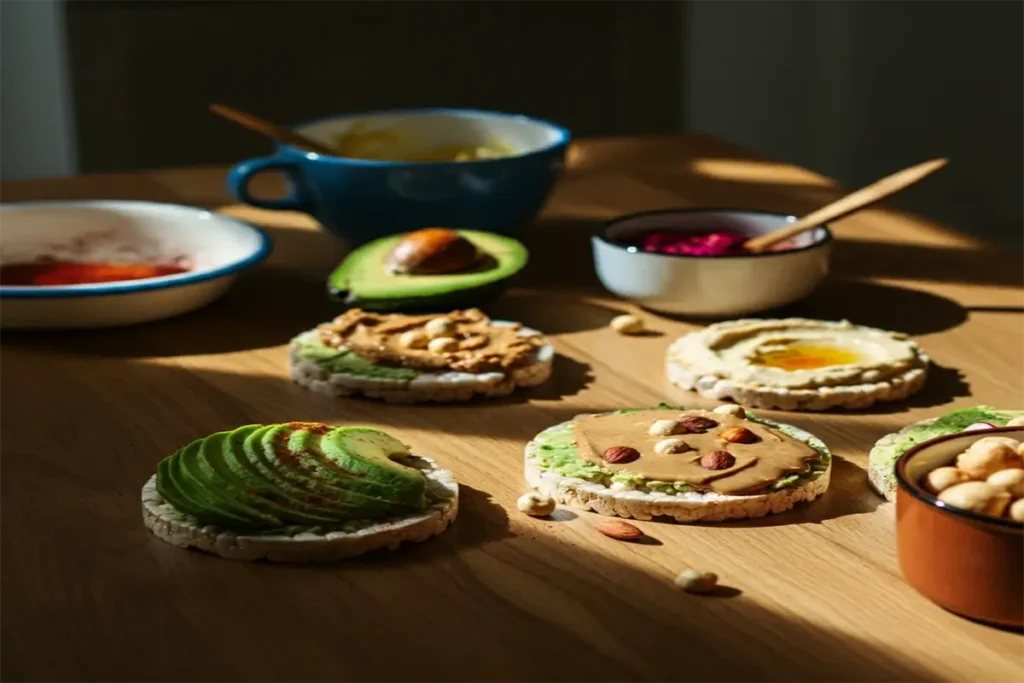
The Process of Steaming Rice Cakes
To steam rice cakes, all you need is a steamer basket, a pot of boiling water, and your choice of rice. Here’s a simple step-by-step guide for you to follow:
- Prepare Your Rice: Start by rinsing the rice thoroughly to remove excess starch.
- Set Up Your Steamer: Add water to the pot and bring it to a boil. Place the rice in the steamer basket, making sure it’s evenly spread out.
- Steam the Rice: Allow the rice to steam for about 30–40 minutes, depending on the type of rice you’re using.
- Shape the Rice: Once the rice is cooked and slightly cooled, press it into molds or form it by hand into small disks.
- Cool and Enjoy: Let the rice cakes cool before serving.
Benefits of Steaming Over Boiling
- Retained Moisture: Steamed rice cakes retain moisture and texture, making them softer and more enjoyable to eat.
- Healthier Option: Steaming preserves the rice’s natural flavor and nutrients, without the need for added fats.
How to Make Rice Cakes at Home
Making your own rice cakes at home is simpler than you might think, and the results are often more flavorful than store-bought versions. Here’s a basic recipe to get you started.
Simple Ingredients for Rice Cakes
Making rice cakes requires just a few ingredients. Here’s what you’ll need:
| Ingredient | Amount |
|---|---|
| Rice (short-grain or sticky rice) | 1 cup |
| Water | 2 cups |
| Salt | 1 tsp |
Step-by-Step Recipe
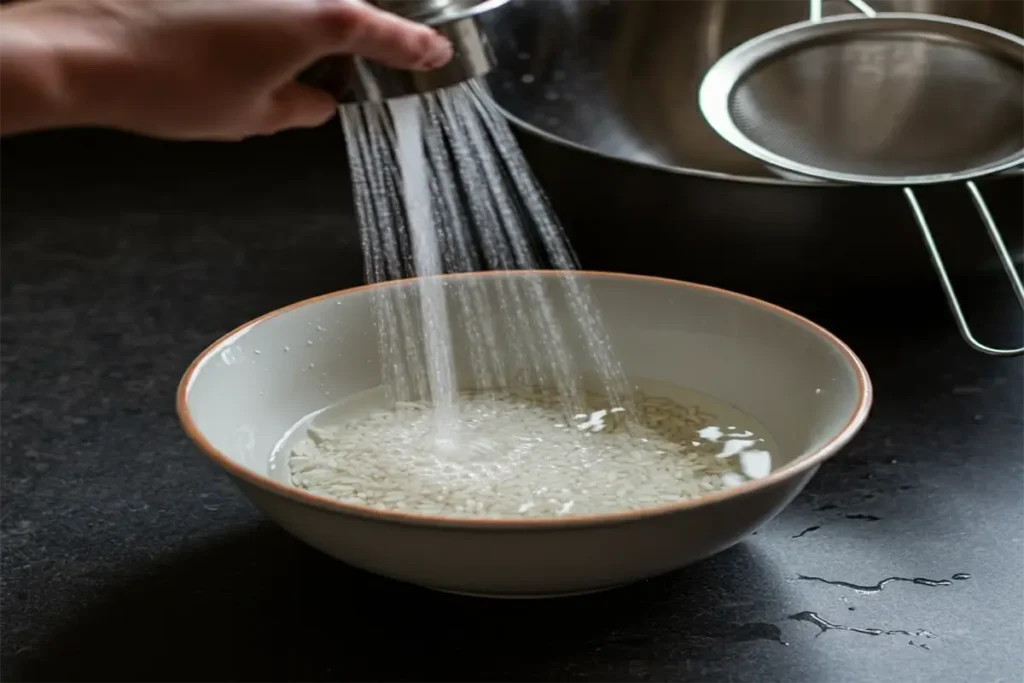

Rinse the Rice:
Start by washing the rice thoroughly to remove any excess starch. This will help the rice cook more evenly.

Steam the Rice:
Add the rice and water to a steamer and steam for 30-40 minutes, or until the rice is tender.
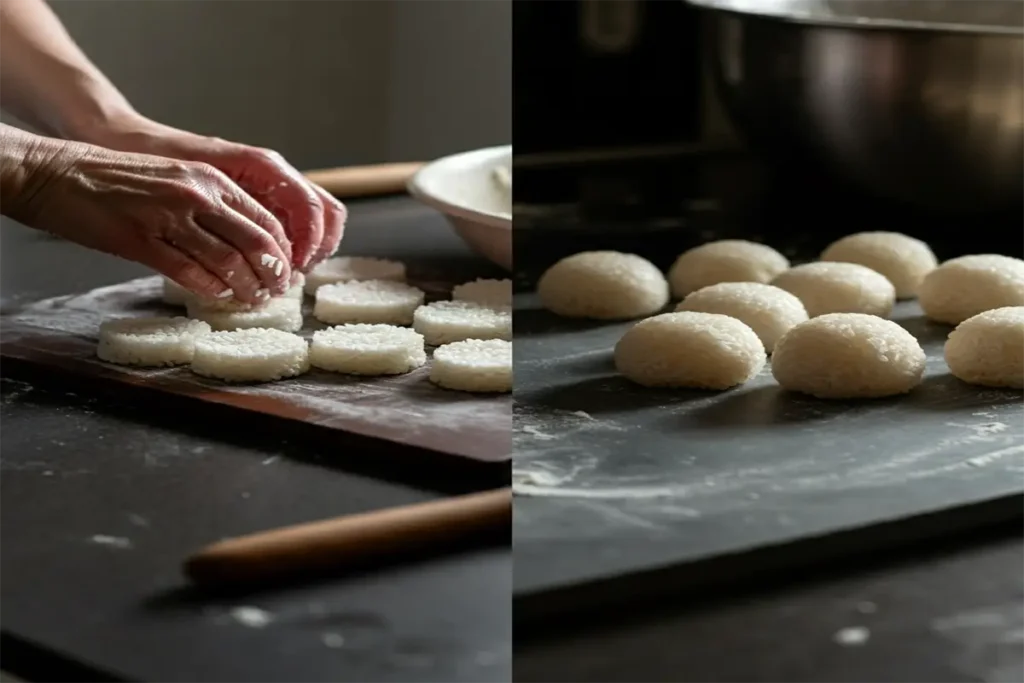
Shape the Rice Cakes:
Once the rice is cooked, press it into small molds or form it into round shapes with your hands.
Cool and Serve:
Allow the rice cakes to cool for a few minutes, and they’re ready to enjoy.
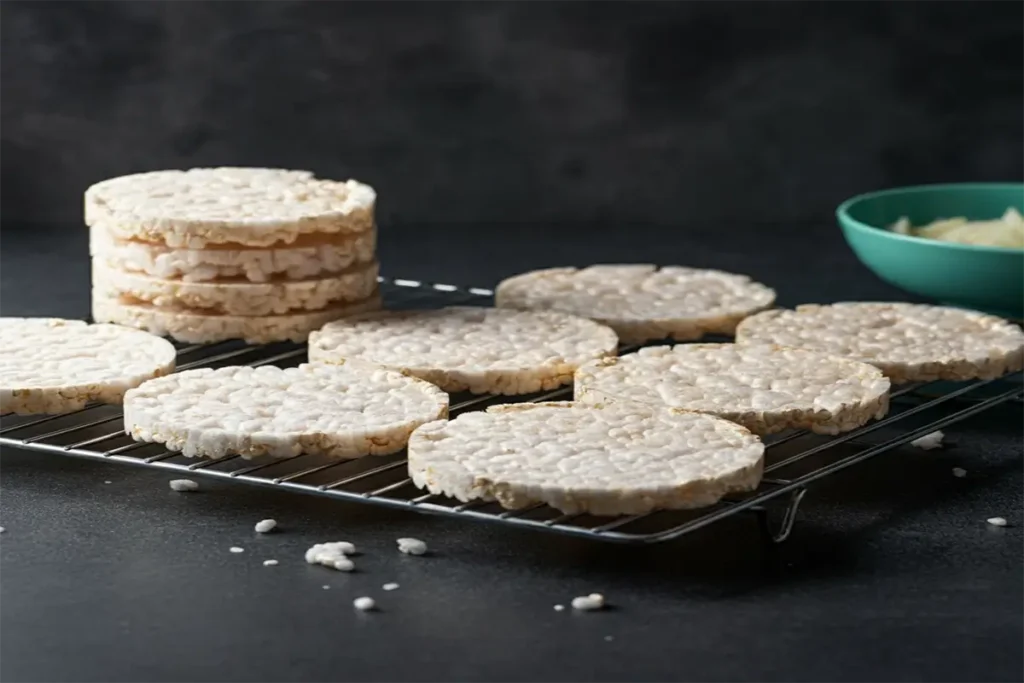
Tips for Perfect Rice Cakes
- Use the Right Rice: For the best texture, opt for short-grain or sticky rice, which holds together better than long-grain varieties.
- Experiment with Toppings: You can experiment with different spices, herbs, or fillings to make your rice cakes more flavorful.
Creative Ways to Use Rice Cakes
Rice cakes are incredibly versatile. You can enjoy them as a snack, turn them into a meal, or even use them as a base for creative recipes. Here are a few ideas to get you started:
Rice Cakes as a Healthy Snack
Rice cakes make a great snack on their own or with various toppings. Try these combinations:
- Nut Butter: Spread almond, peanut, or cashew butter on top for a protein-packed snack.
- Avocado: Top with smashed avocado, a sprinkle of salt, and a dash of lemon juice for a savory treat.
- Hummus: Pair rice cakes with a variety of hummus flavors for a satisfying, crunchy bite.
Rice Cakes for Breakfast or Lunch
- Breakfast Bowl: Add rice cakes to a bowl and top with fresh fruit, yogurt, and a drizzle of honey for a wholesome breakfast.
- Rice Cake Sandwich: Use rice cakes in place of bread for a gluten-free sandwich. Add your favorite fillings like cheese, deli meats, or veggies.
The Nutritional Benefits of Rice Cakes
Rice cakes are a low-calorie, nutrient-dense option that can be part of a balanced diet. Here are some of the key benefits:
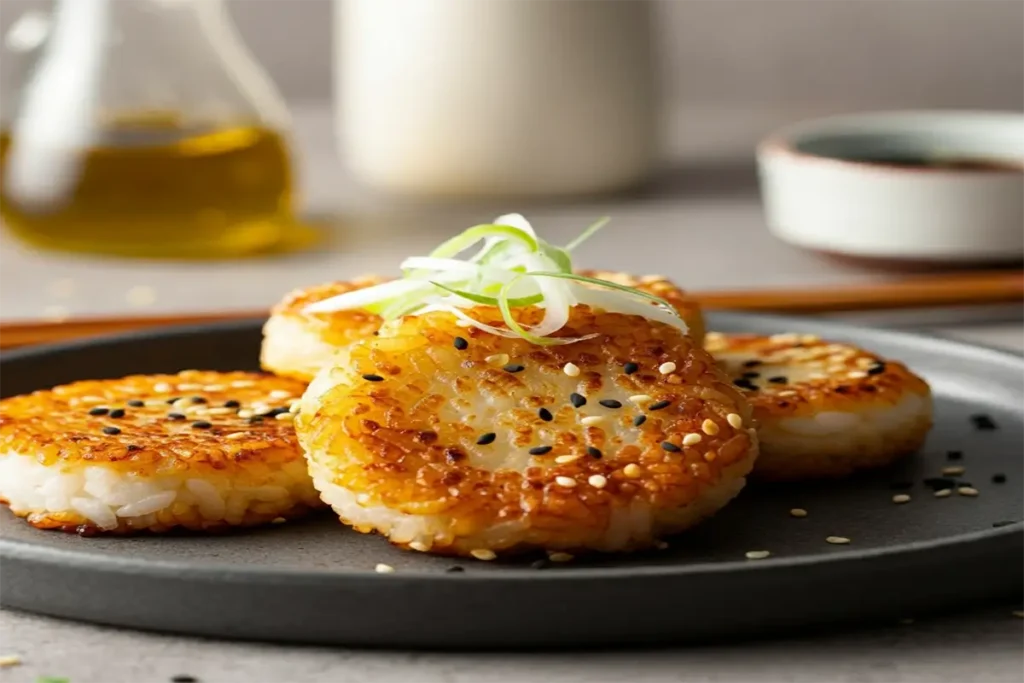
Low-Calorie Option
Rice cakes are naturally low in calories, making them a popular choice for those looking to maintain or lose weight. A plain rice cake typically contains about 35–50 calories, depending on the size and brand.
Gluten-Free and Vegan
Rice cakes are naturally gluten-free, making them an excellent option for those with celiac disease or gluten sensitivities. They are also vegan, so they fit into plant-based diets.
A Good Source of Fiber
Rice cakes, especially those made from whole grains, provide a good amount of fiber. Fiber is important for digestive health and can help you feel fuller longer.
How to Store and Keep Rice Cakes Fresh
Rice cakes can be stored for extended periods if you follow proper storage methods. Here’s how you can keep them fresh:
Storage Tips
- Air-tight Containers: Store your rice cakes in an airtight container to preserve their freshness.
- Freezing: If you’ve made a large batch, you can freeze rice cakes for up to three months. Just wrap them tightly in plastic wrap or foil before freezing.
How Long Do Rice Cakes Last?
Homemade rice cakes typically last about 3–4 days in the refrigerator. Store-bought rice cakes can last much longer—check the packaging for the best-by date.
The Benefits of Healthy Eating
Eating a balanced diet is essential for maintaining overall health and wellness. Healthy eating isn’t just about losing weight—it’s about fueling your body with the nutrients it needs to function at its best. Whole grains like the rice used in rice cakes provide fiber, essential vitamins, and minerals that contribute to heart health, improved digestion, and sustained energy levels throughout the day.
Incorporating a variety of whole foods into your diet—fruits, vegetables, whole grains, and lean proteins—ensures that your body receives all the nutrients it needs to thrive. Rice cakes, when prepared with whole grains and paired with nutrient-rich toppings, are a great way to meet these dietary goals. They’re low in calories yet packed with fiber, making them an ideal option for a healthy snack or meal component.
Furthermore, healthy eating has been linked to improved mental clarity, better sleep, and even reduced stress levels. When you nourish your body with fresh, wholesome foods, you’re also supporting your brain’s ability to function at its best. The right nutrition can help manage mood swings, improve focus, and contribute to a more positive outlook on life.
By focusing on healthy eating and making meals at home, you’re not just improving your physical health—you’re investing in your overall well-being. Whether you’re enjoying a simple snack like rice cakes or preparing a full meal, the benefits of healthy eating will resonate with you long after the meal is over.
How Cooking at Home Supports a Healthier Lifestyle
Making the decision to cook at home is one of the most effective ways to take charge of your health. When you cook your own meals, you can avoid the excessive amounts of sugar, salt, and unhealthy fats that often sneak into restaurant and store-bought food. You have the ability to experiment with healthier ingredients like whole grains, fresh vegetables, and lean proteins, all of which play a key role in supporting your health.
Additionally, home cooking can foster mindfulness and help you develop a better relationship with food. Preparing your meals allows you to slow down and appreciate the food you’re eating. You can choose ingredients that make you feel good and create meals that nourish both your body and mind.
Rice cakes are a perfect example of how simple ingredients can come together to create a nutritious, satisfying dish. Whether you enjoy them as a snack, breakfast, or part of a larger meal, they offer flexibility and can be tailored to your unique dietary needs and preferences. By making rice cakes at home, you’re not only fueling your body with wholesome ingredients but also adopting habits that support your long-term health goals.
Incorporating healthy meals into your daily routine, like making rice cakes at home, can have a profound impact on your lifestyle. The act of cooking allows you to be in control of what you eat, which leads to better food choices and a greater sense of satisfaction. Healthy eating is a key component of maintaining overall wellness, and it starts in the kitchen. So, take the time to prepare meals that nourish both your body and your soul—starting with a simple, delicious rice cake recipe.
Frequently Asked Questions (FAQ)
- What Are Rice Cakes Made Of?
- Rice cakes are typically made from puffed rice and salt, sometimes with added flavorings or seasonings.
- Are Rice Cakes Healthy?
- Yes, rice cakes can be healthy, especially when made from whole grains and topped with nutritious ingredients.
- How Can I Make Rice Cakes Without a Steamer?
- You can also use a pressure cooker or a pot with a steaming rack as an alternative to a traditional steamer.
- Can I Eat Rice Cakes Every Day?
- Rice cakes can be part of a healthy diet when consumed in moderation. Just be mindful of your portion sizes.
- Are Rice Cakes Gluten-Free?
- Most rice cakes are naturally gluten-free, but always check the label for any added ingredients that may contain gluten.

Conclusion
Rice cakes are more than just a simple snack. They’re a versatile, healthy food that can be customized to fit.

